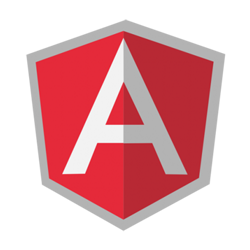
Basic Angular routing is easy to set up. You’ll need to define your routes and the components that should handle each one, in routes.ts .
With any single page application, routing is important. The main reason for this is: users will spend most of their time on the same page. Angular provides routing for your application so that you can divide it into logical parts. These parts make sense not only from a UI perspective, but also programmatically. That is, you want each logical part of your application to live in a relatively small, organized collection of files.
So, let’s begin with what every Angular application needs, which is a routes.ts file. And even if you have only one route, it is best to set up your routing with routes.ts. The main reason for this is: you may want to expand your routing in the future, so why not include this in your application’s architecture now. It’s great planning. Also, you may want to define a component that should handle any routing errors (that is, which component should be instantiated if the user tries to navigate to a non-existing route). As you’ll see in the following examples, any components that will handle routes should be defined in app.module.ts, and then you can use them in your routes.ts file. So let’s take a look at those examples:
Example # 1
In Example # 1, we have our app.module.ts file. The important thing to note here is that you need to declare your components in this file. Our application has three routes: home, products and about. So we need to declare those components here in app.module.ts.
Example # 2
In Example # 2, we have routes.ts. This is where we set up our routes. There is a Routes constant, and it is an array. Each element in this array is an object. Each object has a path property and a component property. The path property defines the string that represents the route that appears in the address bar. For example: “/#/home”. The component property determines which component will handle this route. In each case, the component that matches the specified path property is defined.
You may have noticed that although we have three routes, there are four elements in this array. This is because we have defined a default route. The first element in the array has a path property of: “” (an empty string). It does not have a component property. However, it does have a redirectTo property. What this means is: when a route is not specified, redirect to the home route. So, when the user navigates to the root of the application (i.e. “/”), they are taken to the home route. This value can be any one of our existing routes, so we could have also configured products as the default route.
Example # 3
In Example # 3, we have the HTML for our navigation component. For each navigation item, there is a [routerLink] attribute. This connects the appropriate route to the click event of that HTML element. In each case, the appropriate route has been defined.
So now, whenever a navigation item is clicked, its [routerLink] attribute connects that action to the appropriate component. This will happen because we set a one-to-one mapping between routes and components in the routes.ts file. So, for example, we can have something like: [routerLink]=”[ ‘/home’]”.
Video Example Code
If you want to download the example code, visit this Github page, and then follow the instructions: bit.ly/kcv-angular-routing-basics
Summary
Routing allows you to organize your code into logical units that mirror the navigation choices available to the user, and that’s a good thing. In fact, defining your routing in a routes.ts file is considered a best practice. The routes.ts file provides a one-to-one mapping between routes and the components that should handle each route respectively. And your routes.ts file also allows you to define which component should handle cases in which a non-existent route is attempted. But don’t forget that essential detail: each component that you leverage in routes.ts must first be defined in your app.module.ts file. Routing in Angular is not difficult, but it does require some effort when you start putting together your application. These basics are an important part of any single page application.
